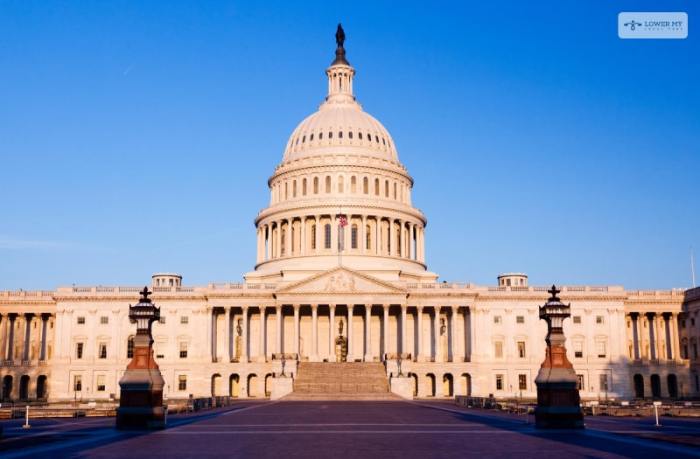
Trump cant stop the energy transition – Trump can’t stop the energy transition. This deep dive explores the political, economic, and environmental forces driving the shift away from fossil fuels, highlighting the challenges and opportunities inherent in this crucial global undertaking. We’ll examine the arguments against the transition, the economic implications of both continued fossil fuel reliance and a renewable future, and the significant technological advancements that are powering the change.
The article delves into President Trump’s stance, contrasting it with other political viewpoints and exploring the motivations behind his opposition. It also analyzes the potential economic benefits and costs of the transition, considering how different sectors of the economy might be affected. Furthermore, it examines the environmental and social impacts, weighing the pros and cons of fossil fuels versus renewable energy, along with the potential for conflict and inequality.
Political Opposition to Energy Transition
The energy transition, driven by concerns about climate change and the need for sustainable energy sources, faces significant political opposition, particularly from figures like former President Donald Trump. This opposition is rooted in a variety of arguments, often intertwined with economic and political considerations. Trump’s stance on the matter provides a valuable case study for understanding the forces at play in the ongoing debate.Trump and his supporters have consistently argued that the energy transition is economically damaging and detrimental to American interests.
They frequently cite concerns about job losses in the fossil fuel industry, increased energy costs for consumers, and the potential for a decline in national energy independence.
Arguments Against the Energy Transition
The core arguments against the energy transition often revolve around the perceived negative economic impacts. Supporters of the status quo often claim that transitioning away from fossil fuels will lead to significant job losses in coal, oil, and gas sectors. Furthermore, they argue that the cost of renewable energy technologies, while improving, is still higher than that of fossil fuels, resulting in increased electricity costs for consumers.
The perceived threat to national energy independence, potentially leaving the nation vulnerable to global energy markets, is another recurring concern.
Trump’s Policies and Actions to Hinder the Transition
Trump actively worked to weaken environmental regulations and policies that promote renewable energy sources. His administration rolled back numerous Obama-era regulations aimed at reducing greenhouse gas emissions, which were viewed as crucial steps in the energy transition. For example, the withdrawal from the Paris Agreement on climate change demonstrated a clear stance against international efforts to combat climate change.
Furthermore, Trump’s administration actively sought to expedite the permitting process for fossil fuel projects, potentially encouraging more investment in these industries.
Impact of Trump’s Rhetoric on Public Opinion
Trump’s rhetoric often fueled skepticism and division on the issue of the energy transition. His statements, frequently portraying the energy transition as a threat to the American economy and way of life, resonated with a segment of the public. This rhetoric, coupled with actions taken by the administration, significantly impacted public discourse and shaped the debate surrounding the energy transition.
Perspectives on Trump’s Motivations
Different perspectives exist on the motivations behind Trump’s opposition to the energy transition. Some argue that it was purely a strategic move to appeal to his base, emphasizing fossil fuel interests. Others believe that it was a genuine concern about the economic implications of transitioning away from fossil fuels, while overlooking the long-term benefits of renewable energy. It is also argued that Trump’s policies were influenced by political considerations and a desire to challenge established environmental regulations.
Comparison with Other Political Figures
Comparing Trump’s stance to that of other political figures reveals a spectrum of opinions on the energy transition. While some politicians acknowledge the urgency of the climate crisis and support policies promoting renewable energy, others remain firmly entrenched in supporting fossil fuels, often citing similar economic and political motivations.
Economic Factors Cited by Trump
Trump and his supporters often point to the economic advantages of the fossil fuel industry, including job creation, energy security, and affordability. They argue that transitioning away from fossil fuels would negatively impact the economy, leading to job losses and increased energy costs.
Unintended Consequences of Trump’s Policies
The policies enacted by Trump’s administration, focused on maintaining the status quo in the energy sector, might have had unintended consequences on the long-term economic viability of the American energy sector. The increasing costs of climate change, including extreme weather events and damage to infrastructure, could result in long-term economic losses. Furthermore, a lack of investment in renewable energy technologies could put the U.S.
at a disadvantage in the global economy as other countries continue to invest in these sectors.
Economic Implications of the Energy Transition
The shift away from fossil fuels towards renewable energy sources presents a complex interplay of economic opportunities and challenges. Understanding these implications is crucial for navigating the transition effectively and maximizing its benefits. The economic landscape is undergoing a fundamental transformation, and proactive planning is essential for mitigating potential risks and capitalizing on the emerging opportunities.The energy transition is not simply a shift in technology; it’s a profound restructuring of the global economy, demanding a reassessment of existing industries and investment strategies.
Trump’s attempts to halt the energy transition are ultimately futile. The shift towards renewable energy is unstoppable, driven by scientific advancements and global demand. This transition, though, will only be truly sustainable if we prioritize environmental conservation, like how we can restore coral reefs. How we can restore coral reefs is a crucial piece of the puzzle, and ignoring these efforts is short-sighted.
Ultimately, ignoring the global imperative for a sustainable energy future will only hurt us all in the long run, not just those who stand in opposition to the change.
This transformation will create new jobs, industries, and markets while simultaneously impacting existing sectors. The transition’s success hinges on careful planning and a commitment to addressing the potential economic dislocations.
Potential Economic Benefits of Transitioning Away from Fossil Fuels
The transition to renewable energy presents numerous economic advantages. Decreased reliance on volatile fossil fuel markets can stabilize energy costs, reducing inflationary pressures and fostering greater economic predictability. The development and deployment of renewable technologies can stimulate innovation and create high-skilled jobs in manufacturing, engineering, and installation. Furthermore, reduced pollution from fossil fuels leads to lower healthcare costs and improved public health, indirectly contributing to a stronger and more productive workforce.
Economic Costs Associated with a Rapid Energy Transition
A rapid energy transition, while necessary, will undoubtedly involve economic costs. The shift away from fossil fuels requires significant investments in new infrastructure, technology, and training. Existing fossil fuel industries may experience job losses as their demand declines. The upfront costs of transitioning can be substantial, potentially impacting the short-term economic outlook for certain regions and sectors.
However, the long-term benefits of a sustainable energy system often outweigh these short-term costs.
Comparison of Short-Term and Long-Term Economic Impacts
| Characteristic | Continuing Current Energy Practices | Transitioning to Renewable Sources |
|---|---|---|
| Short-Term Impacts | Relatively stable energy prices (though potentially volatile), limited job creation in renewable energy, continued support for fossil fuel industries, potential for job displacement in these industries. | Higher upfront costs for infrastructure and technology, potential job losses in fossil fuel industries, increased energy prices initially, job creation in renewable energy industries. |
| Long-Term Impacts | Increased vulnerability to fossil fuel price fluctuations, potential for environmental damage and associated healthcare costs, limited innovation in renewable energy technologies, decreased competitiveness in the global market. | Lower energy costs in the long run, increased energy security, greater innovation and competitiveness in the global market, job creation across diverse sectors, reduced healthcare costs associated with pollution. |
Impact on Different Sectors of the Economy
The energy transition will affect various sectors differently. The manufacturing sector, heavily reliant on fossil fuels for production, will face significant challenges in adapting to renewable energy sources. However, the transition will also create new opportunities in manufacturing renewable energy components. The transportation sector will need to undergo a complete overhaul, transitioning from fossil fuel-based vehicles to electric or alternative fuel options.
This shift will impact automotive manufacturing and related industries, but it will also create new markets for electric vehicle production and charging infrastructure.
Job Displacement and Creation
The energy transition will inevitably lead to job displacement in fossil fuel industries, such as coal mining and oil extraction. However, the creation of jobs in renewable energy sectors, including solar panel manufacturing, wind turbine installation, and energy storage, will compensate for these losses. Upskilling and retraining programs will be crucial to facilitate the transition of workers from declining to emerging industries.
Government policies and initiatives should support this transition by providing financial assistance and educational resources to affected workers.
Comparison of Investing in Fossil Fuels vs. Renewable Energy
Investing in fossil fuels carries substantial risks associated with environmental regulations, fluctuating energy prices, and the long-term sustainability of the industry. Conversely, investments in renewable energy sources present a potential for high returns and a lower risk profile in the long term, given the increasing global demand for sustainable energy solutions. The growth of the renewable energy sector offers attractive investment opportunities, particularly for long-term investors seeking stable returns and positive environmental impact.
Trump’s Policies and Job Markets
Trump’s policies, often favoring the continued use of fossil fuels, could negatively impact job markets and industries related to renewable energy. His administration’s actions could hinder the development of renewable energy technologies, delaying the transition and potentially reducing job creation in this sector. This could also create a situation where the United States loses out on the economic opportunities presented by the burgeoning renewable energy market.
It’s pretty clear that Trump can’t halt the global energy transition. No matter how much he might have promised during his campaign, like those detailed in his donald trump campaign promises , the shift towards renewable energy sources is simply too powerful a force. Technological advancements and consumer demand are driving this change, making it inevitable.
Investment Opportunities in Renewable Energy
| Investment Area | Potential Impact of Trump’s Opposition |
|---|---|
| Solar Panel Manufacturing | Potential delays in government incentives and regulations could impact investment returns and market growth. |
| Wind Turbine Installation | Reduced funding for research and development, along with potential regulatory hurdles, could slow down deployment and investment opportunities. |
| Energy Storage Solutions | Lack of support for battery technology development and deployment could reduce market size and investor interest. |
| Electric Vehicle Infrastructure | Opposition to policies supporting electric vehicle adoption could limit infrastructure development and market growth. |
Environmental and Social Impacts

The energy transition, driven by the need to mitigate climate change, carries significant environmental and social implications. While the transition offers substantial benefits, its speed and implementation can impact communities and ecosystems in various ways. Understanding these impacts is crucial for developing equitable and sustainable solutions.The continued reliance on fossil fuels has demonstrably damaging effects on the environment and society.
From air pollution and greenhouse gas emissions to water contamination and habitat destruction, the consequences are far-reaching and often irreversible. The social implications of a rapid transition, while necessary, can also create challenges, including job displacement in fossil fuel industries and the potential for increased social inequality.
Environmental Impact of Fossil Fuel Use
The burning of fossil fuels releases harmful pollutants into the atmosphere, contributing significantly to air and water pollution. These pollutants, including particulate matter, sulfur dioxide, and nitrogen oxides, are linked to respiratory illnesses, cardiovascular problems, and premature mortality. Greenhouse gas emissions, primarily carbon dioxide, trap heat in the atmosphere, causing global warming and its associated consequences, such as rising sea levels, extreme weather events, and disruptions to ecosystems.
For example, the increased frequency and intensity of wildfires in the western United States are directly linked to rising temperatures and drier conditions, driven by climate change from fossil fuel emissions.
Social Implications of a Rapid Energy Transition
A rapid shift away from fossil fuels can lead to significant job losses in the fossil fuel industry. Workers in coal mines, oil refineries, and related sectors may face unemployment or need retraining for new jobs in renewable energy or other industries. This transition also presents opportunities for new jobs and economic growth in renewable energy sectors. However, the distribution of these opportunities and the associated costs may not be evenly distributed across all communities and social groups.
Environmental Benefits Lost or Gained with the Transition
The transition to renewable energy sources could lead to significant environmental benefits, such as reduced air and water pollution, and the preservation of natural habitats. The reduction in greenhouse gas emissions would also help mitigate climate change and its severe consequences. However, the production and disposal of renewable energy technologies also have environmental impacts. For instance, manufacturing solar panels requires significant resources, and proper disposal of batteries is crucial to avoid environmental contamination.
Health Impacts of Continued Fossil Fuel Use
The continued use of fossil fuels poses significant health risks to individuals and communities. Exposure to air pollutants from fossil fuel combustion can lead to respiratory problems, cardiovascular diseases, and various cancers. The long-term health consequences of continued fossil fuel use are substantial and disproportionately affect vulnerable populations. Studies have shown a strong correlation between increased air pollution from fossil fuels and increased rates of respiratory illnesses and premature deaths in urban areas.
Comparison of Environmental and Social Costs of Different Energy Sources
Different energy sources have varying environmental and social costs. Fossil fuels, while readily available and relatively cheap to produce, come with significant environmental consequences. Renewable energy sources, such as solar and wind, offer lower environmental impacts but may have challenges related to intermittency and land use. Nuclear power offers a high-energy output with low greenhouse gas emissions, but carries risks related to waste disposal and potential accidents.
The social costs of each energy source also need to be considered, including job creation, community impacts, and potential conflicts.
Potential for Conflict and Inequality Related to Energy Transition
The energy transition can create conflicts between different interests, such as those of environmental activists and fossil fuel companies. It can also lead to social inequality if the transition is not managed fairly. For example, communities reliant on fossil fuel jobs may be disproportionately affected by job losses. It is crucial to consider the social and economic implications of the transition and ensure that the benefits are distributed equitably.
Pros and Cons of Fossil Fuels vs. Renewable Energy
| Factor | Fossil Fuels | Renewable Energy |
|---|---|---|
| Environmental Impact | High pollution, greenhouse gas emissions, habitat destruction, water contamination. | Lower pollution, reduced greenhouse gas emissions, preservation of natural habitats. |
| Social Impact | Job displacement in fossil fuel industries, potential for increased social inequality. | Job creation in renewable energy sectors, potential for economic growth. |
| Economic Costs | Lower initial investment, but higher long-term costs due to environmental damage and health impacts. | Higher initial investment, but lower long-term costs due to reduced environmental damage and health impacts. |
| Sustainability | Finite resource, unsustainable in the long run. | Infinite resource, sustainable in the long run. |
Technological Advancements in Renewable Energy

The energy transition hinges on a confluence of factors, but technological innovation stands as a critical driver. Recent breakthroughs in renewable energy technologies are accelerating the shift away from fossil fuels, presenting exciting opportunities and tackling the challenges inherent in this monumental undertaking. The potential for job creation and economic growth is significant, alongside the potential to address environmental concerns and mitigate climate change.
Recent Advances in Renewable Energy Technologies
Rapid advancements in solar panel efficiency, wind turbine design, and battery storage capacity are transforming the renewable energy landscape. Solar panels are becoming increasingly efficient at converting sunlight into electricity, with newer models boasting higher power output and lower manufacturing costs. Wind turbines are taller and more sophisticated, capturing stronger winds at higher altitudes, thereby increasing energy output and reducing the land area required for deployment.
Furthermore, battery technology improvements are enhancing the reliability and cost-effectiveness of energy storage, making intermittent renewable sources like solar and wind more viable for grid integration.
Influence of Technological Advancements on the Energy Transition
Technological advancements are directly influencing the energy transition by lowering the cost and increasing the reliability of renewable energy sources. This is demonstrably evident in the declining prices of solar panels and wind turbines over the past decade, making them increasingly competitive with fossil fuel-based power generation. Moreover, improved energy storage technologies are resolving the intermittency problem associated with solar and wind power, making them more reliable and integrated into the existing power grid infrastructure.
Challenges in the Energy Transition
Despite significant progress, challenges remain in the energy transition. One key challenge lies in the infrastructure required to support widespread renewable energy deployment. Transmission lines and grid management systems need to be upgraded to accommodate the influx of variable renewable energy sources. Moreover, large-scale energy storage solutions need further development to ensure the stability and reliability of the power grid.
Trump’s attempts to halt the energy transition are ultimately futile. The shift towards renewable energy sources is inevitable, much like how allergy shots can often help manage seasonal allergies. Just as specific immunotherapy treatments can desensitize the body to allergens, the push for sustainable energy sources is building momentum. This ongoing transition, powered by technological advancements and growing public demand, is simply too powerful to be stopped.
It’s a crucial aspect of a healthier planet, and finding effective solutions for managing our environmental impact is as important as understanding how do allergy shots work. The energy transition is unstoppable, and ultimately, a beneficial change for the future.
Addressing Trump’s Concerns Through Technological Innovation
Trump’s concerns about job displacement and economic impact can be addressed through proactive investment in renewable energy technologies and supporting related industries. This can lead to the creation of new jobs in areas like manufacturing, installation, maintenance, and research. The development of advanced materials, improved manufacturing processes, and optimized energy storage solutions can all contribute to a more robust and competitive renewable energy sector.
Creation of New Industries and Jobs
Technological advancements in renewable energy are creating new industries and jobs. The manufacturing of solar panels, wind turbines, and energy storage systems are generating employment opportunities. Moreover, the installation, maintenance, and operation of renewable energy infrastructure create a growing workforce. Furthermore, research and development in renewable energy technologies are stimulating innovation and the creation of new companies and specialized roles.
Examples of Companies and Individuals Working on Renewable Energy Solutions, Trump cant stop the energy transition
Numerous companies and individuals are at the forefront of developing renewable energy solutions. Tesla, for example, is pushing the boundaries of battery technology and electric vehicle production. Similarly, companies like SunPower and First Solar are leading the way in solar panel technology. Furthermore, numerous startups are innovating in areas like offshore wind energy and advanced energy storage.
Furthermore, many individuals are contributing to this transition through entrepreneurship, research, and advocacy.
Current State of Renewable Energy Technologies
| Technology | Efficiency | Cost | Scalability |
|---|---|---|---|
| Solar Photovoltaics | 15-22% (typical) | Decreasing rapidly | High, with potential for gigawatt-scale deployment |
| Wind Power (Onshore) | 40-60% (typical) | Decreasing | High, with potential for significant capacity additions |
| Wind Power (Offshore) | 50-70% (typical) | Moderate | Medium, with substantial potential for large-scale deployment |
| Battery Storage | 70-90% (typical) | Decreasing | Medium, with potential for substantial improvements |
Note: Efficiency, cost, and scalability figures are approximate and vary depending on specific technologies and implementation conditions.
Global Context of Energy Transition: Trump Cant Stop The Energy Transition
The global energy transition is no longer a hypothetical future; it’s an unfolding reality. Nations are actively pursuing strategies to reduce reliance on fossil fuels, driven by concerns over climate change, energy security, and economic competitiveness. This shift is not uniform across the globe, reflecting diverse political, economic, and social factors.The transition isn’t just about replacing fossil fuels with renewables.
It involves a complex interplay of technological advancements, policy changes, economic incentives, and societal adjustments. This intricate web of factors shapes the global energy landscape and demands a multifaceted approach to understanding its progress.
Global Trends in Energy Transition
Various countries are showing diverse approaches to the energy transition. Some are aggressively investing in renewable energy infrastructure, while others are prioritizing energy security and maintaining fossil fuel reliance. The trends include a growing global push for renewable energy sources like solar and wind power, coupled with increasing investments in energy storage technologies. This trend is driven by the decreasing costs of renewable energy technologies and growing awareness of climate change.
A significant portion of emerging economies are also seeing rapid growth in renewable energy investments, driven by a combination of economic factors and governmental initiatives.
Role of International Cooperation in Energy Transition
International cooperation plays a crucial role in facilitating the global energy transition. Agreements and collaborations are necessary to share knowledge, technology, and best practices. Joint research and development initiatives, coordinated policy frameworks, and shared investment strategies are essential to accelerate the transition and address its challenges. The Paris Agreement, for instance, represents a global commitment to climate action and provides a platform for international cooperation.
However, achieving widespread, effective cooperation remains a significant challenge.
Influence of Global Events on the Energy Transition
Geopolitical events and economic fluctuations can significantly influence the energy transition. For example, the war in Ukraine has highlighted the vulnerability of energy security and the need for diversification of energy sources. This has accelerated efforts to reduce dependence on specific regions for energy imports. Similarly, global economic downturns or recessions can impact investment in renewable energy, affecting the pace of the transition.
Natural disasters and climate-related events also disrupt energy systems, emphasizing the importance of resilient and sustainable infrastructure.
Different Perspectives on the Global Energy Transition from Various Countries
The energy transition is viewed differently across countries, depending on their unique circumstances. Developed nations often prioritize climate change mitigation and technological innovation, while developing nations may prioritize energy access and economic growth. For example, some developing nations may see reliance on fossil fuels as necessary for economic development, while others are adopting more sustainable approaches.
Comparison of Global Energy Transition Strategies of Different Nations
Different nations employ varying strategies in their energy transition. Some nations focus on specific renewable energy sources, like solar power, while others adopt a more diversified approach. Some nations prioritize carbon capture and storage technologies, while others focus on improving energy efficiency. Countries’ unique resource endowments, political landscapes, and economic priorities shape their respective strategies. For instance, nations with abundant solar resources may prioritize solar power, while those with strong wind resources might focus on wind power.
Potential Barriers to Global Cooperation in the Energy Transition
Several barriers hinder effective global cooperation in the energy transition. Differences in political ideologies, economic interests, and technological capabilities can create friction. For example, some nations might be hesitant to reduce their reliance on fossil fuels if it threatens their economic interests or energy security. Also, differing perspectives on the urgency of the climate crisis and the role of government intervention can complicate international agreements and collaborations.
Impact of Trump’s Policies on Global Efforts for a Sustainable Energy Future
Trump’s administration’s policies significantly impacted global efforts towards a sustainable energy future. The withdrawal from the Paris Agreement signaled a retreat from international cooperation on climate action. This decision undermined global efforts to reduce greenhouse gas emissions and potentially slowed the development of renewable energy technologies. The rollback of environmental regulations and promotion of fossil fuels further complicated the transition and set a precedent that may influence other nations’ approaches.
This example demonstrates how national policies can have global implications for environmental sustainability.
Final Thoughts
Ultimately, the energy transition is a complex interplay of political will, economic realities, and technological innovation. While President Trump’s policies might temporarily hinder progress, the global trend towards renewable energy is undeniable. Technological advancements and growing public support for sustainability suggest that the transition will continue, albeit with potential challenges along the way. The long-term benefits of a sustainable energy future, in terms of environmental protection and economic growth, seem undeniable, and the world is moving forward in that direction.







